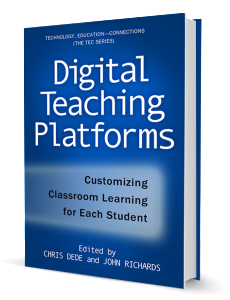K-12 Teaching
OVERVIEW
K-12 teachers today have to be more dedicated than ever. For years dedication was the only thing that kept them at their jobs. Teachers with a college degree and an advance Multiple Subject Credential were paid the same as a full time McDonald’s employee. The justifications of tenure and much vacation time meant little as many teachers had to work extra jobs to make ends meet. Tenure which was instituted to protect teachers from marauding parents and politians has led to the inability to fire ineffective teachers at the expense of vibrant young college graduates who now question entering the profession. The elimination of tenure and the paying new teachers what other college graduates with advance degrees earn has been discussed but gaining traction has been hard in this era of school budget cuts. But regardless of teacher circumstance if they are in the classroom the student comes first.
Tenure which was instituted to protect teachers from marauding parents and politians has led to the inability to fire ineffective teachers at the expense of vibrant young college graduates who now question entering the profession. The elimination of tenure and the paying new teachers what other college graduates with advance degrees earn has been discussed but gaining traction has been hard in this era of school budget cuts. But regardless of teacher circumstance if they are in the classroom the student comes first.
In addition to that, K-12 instruction is in a state of flux. Education Technology is revolutionizing the way K-12 curriculum is taught. Today’s teachers not only have to become computer literate almost to the level of a computer technician but they also have to implement the more stringent common core testing standards. The federal government has recognized the need to train K-12 teachers by implementing Title IID which states: “To encourage the effective integration of technology resources and systems with teacher training and curriculum development to establish research-based instructional methods that can be widely implemented as best practices by State educational agencies and local educational agencies.”
 In her article “Standardized Tests for Everyone? In The Internet Age, That’s the Wrong Answer” ( September 23, 2011) Cathy N. Davidson said the U.S. high school completion rate is dropping slightly in real terms, and dramatically relative to other industrialized nations. But even more serious is the rate at which teachers are leaving the profession. Teacher attrition has increased by more than 50 percent in the past decade, and it is often the best teachers who leave first, many citing the demoralizing testing requirements of No Child Left Behind.
In her article “Standardized Tests for Everyone? In The Internet Age, That’s the Wrong Answer” ( September 23, 2011) Cathy N. Davidson said the U.S. high school completion rate is dropping slightly in real terms, and dramatically relative to other industrialized nations. But even more serious is the rate at which teachers are leaving the profession. Teacher attrition has increased by more than 50 percent in the past decade, and it is often the best teachers who leave first, many citing the demoralizing testing requirements of No Child Left Behind.
Right now, we have teachers, out of self-preservation and to protect their schools and their students, teaching to a test that was designed in the era of the Model T. We are 15 years into the information age. Now is the time to begin to rethink how we assess learning for the challenges of the digital world that lie ahead. It’s not as simple as filling in the bubbles.
In addition, many teachers have come to realize that many of the expensive teacher training classes that they took have had very little application in the classroom (see the article “Too Much Missing from Teacher Training Programs” below).
TEACHING THE COMMON CORE
As educators move forward using the Common Core State Standards and Curriculum, more significance will be given to state-by-state comparisons of results from standardized assessments of the curriculum. These results will be indicative of the success or failure of the standards and also of the teachers entrusted with the responsibility of educating our students. Educators must act with a sense of urgency to ensure that students are in nurturing learning environments and in the company of excellent teachers. It is no longer acceptable to place less-than-stellar teachers in front of students. Research clearly indicates that teachers have the greatest impact on student learning in our schools. The impact can be small or large, positive or negative. (see Hope and Anxiety: What do Teachers think about the Common Core Standards? in K-12 Teaching/articles)
School leaders must move to support improved instruction in each and every child’s classroom. The first step is to conduct classroom observations that contribute to the growth and development of  teachers, with an eye on how improved teacher performance affects student learning.
teachers, with an eye on how improved teacher performance affects student learning.
As new learning and teaching platforms emerge to accommodate the common core requirements of a more pro-active classroom is emerging where student have to take more responsibility for their own learning. Teachers have to be more of a motivating force as they nurture and environment of the six Cs: critical thinking, collaboration, communication, cooperation, creativity and curiosity.
The role of the instructor is very different from the usual teacher’s role. Rather than being a “content expert” who provides the facts, the teacher is a facilitator, responsible for guiding students to identify the key issues in each problem and to find ways to learn those areas in appropriate breadth and depth. Teachers in a problem based learning curriculum need to alter their traditional teaching methods of lectures, discussions, and asking students to memorize materials for tests. As such, teachers focus their attention on questioning student logic and beliefs, providing hints to correct erroneous student reasoning, providing resources for student research, and keeping students on task. Because this role will be new to some teachers, they may have concern moving away from their past practice. For more information on teaching the Common Core (see: K-12 Learning and Teaching Platforms).
TEACHING IN THE DIGITAL AGE
K-12 teaching in the digital age has, on one hand, required teachers to learn new teaching methods to keep abreast the quickly evolving k-12 eLearning technology; on the other hand, once a k-12 teacher has mastered these teaching tools s/he’s effectiveness of instruction will not only improve but also simplify the workload of the teacher.
Digital technology has allowed the use of Open Educational Recourses (OER) to be able to teach advance students and lagging students in the same classroom at the same time. The tools are there it’s now up to the k-12 teacher to grasp these tools for the betterment of their students. Because of this there are no longer reasons for teachers to be ineffective. Technology has also allowed teacher assessment to be greatly enhanced.
The following is from the white paper “Teacher Evaluation and Teacher Effectiveness, Classroom Observations,” By Sally J. Zepeda and Bill Kruskamp:
 Classrooms are complex due to the variability of the teaching force and the students who populate them. Good’s (1988) thoughts hold true for the practical aspects of conducting classroom observations as a way “to describe what takes place in classrooms in order to delineate the complex practical issues that confront practitioners.” Learning to teach is a lifetime endeavor that needs to be supported by classroom observations. If teachers are not learning, it is highly unlikely that their students are learning.
Classrooms are complex due to the variability of the teaching force and the students who populate them. Good’s (1988) thoughts hold true for the practical aspects of conducting classroom observations as a way “to describe what takes place in classrooms in order to delineate the complex practical issues that confront practitioners.” Learning to teach is a lifetime endeavor that needs to be supported by classroom observations. If teachers are not learning, it is highly unlikely that their students are learning.
Classroom observations that make a difference in the professional lives of teachers, and by extension, the academic lives of students, situate the observer taking notes to record what the teacher is doing, the interactions between students, the set-up of the classroom space, and so on. The data from such classroom observations serve as the fuel for meaningful observer– teacher discussions, with feedback that is rich in detail. For more on teaching in the digital age see: eLearning Technology in the Classroom)

Recent Comments